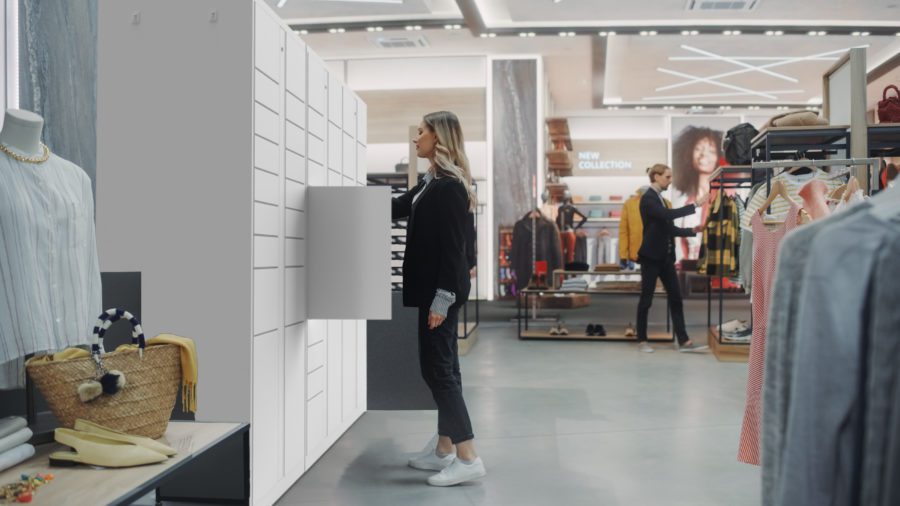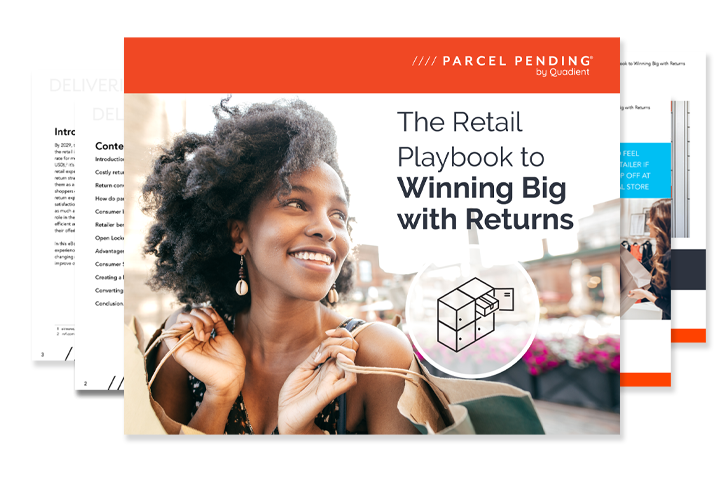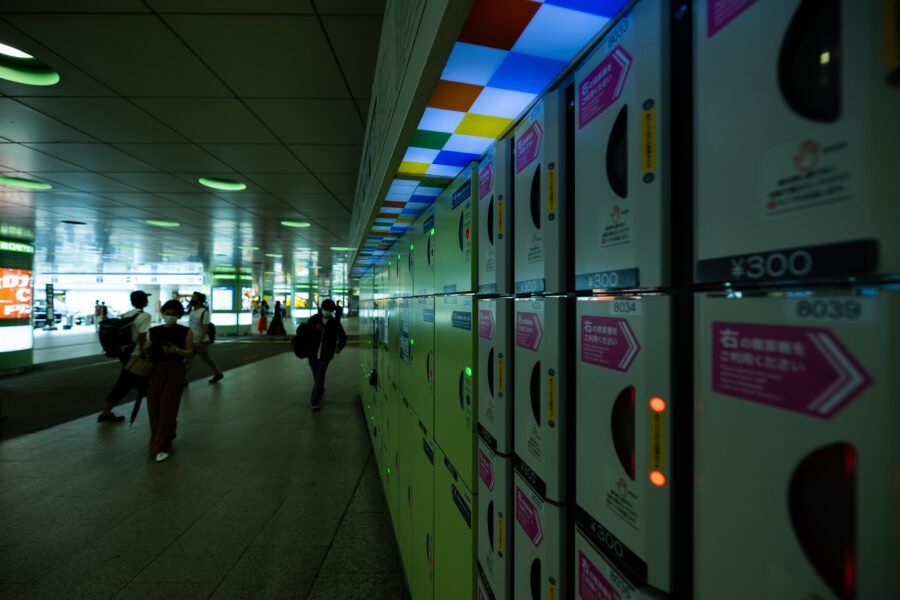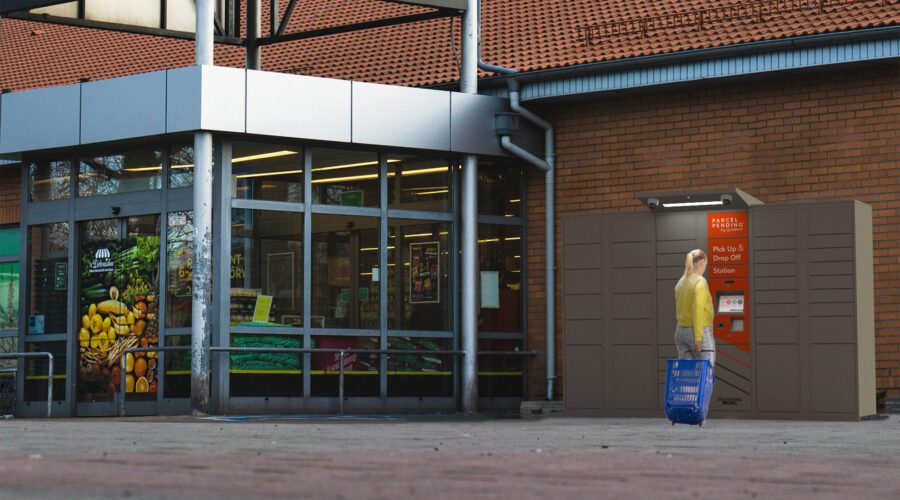
Open Locker Network
How to Transform Retail Returns from Cost to Differentiator
Written by: Alexandrea Purvis
5 Min Read
Published: October 3, 2023
Updated: May 9, 2024
By 2029, the estimated value of goods returned to sellers and manufacturers in the retail industry is anticipated to reach $954 billion, and with the average return rate for merchandise purchased in 2022 estimated to be 6%($816 billion USD), it’s safe to say that returns have become a significant component of the retail experience.
As return rates continue to grow, retailers need to evaluate their return solutions not only within the framework of profitability but also regarding them as a tool to acquire new customers and build customer loyalty. E-commerce consumers anticipate a premium level of satisfaction throughout their purchasing journey, including the returns process. The efficacy of a retailer’s returns procedure holds equal importance alongside product assortment, pricing, and website aesthetics. By integrating efficient and convenient return options, retailers can enhance their value proposition, thereby leaving a lasting imprint on the holistic customer experience.
Returns can make or break customer relationships and loyalty
The returns process is a critical post-purchase service that often influences consumers’ initial buying decisions. However, with the global reverse logistics market expected to be worth $958.3 billion by 2028, retailers grapple with the decision of whether to implement a returns fee or provide complimentary return services to customers.
According to a survey that analyzed consumers in the United States, 81% said that free shipping is something they consider when making a purchase online, and 39% of consumers said they would be very likely to stop buying from a business that no longer offers free returns. Because free deliveries have become the norm for consumers, they also hold returns to the same standard. As such, fees are not always the best answer to offset the rise in returns, as they can diminish customer loyalty and the relationships that a retailer and a consumer have built. Instead, investment in a more comprehensive range of return options, such as Buy Online, Return In-Store (BORIS), or Buy Online, Return in Locker (BORIL), is the best answer to creating a win-win for customers and retailers.
Parcel lockers create new opportunities for returns
Parcel lockers are a game changer for retailers who want to offer a self-service option for customers to collect their online purchases or drop off a return at their convenience without waiting in line or interacting with a store associate. Lockers can be strategically positioned within the store premises, outside store locations, or at other specified sites, affording customers a diverse array of choices for the timing and location of their collection or return of purchases. Parcel lockers are a boon for retailers who have already integrated them into their stores, with different benefits to consumers and retailers.
-
Consumer benefits
With retailers reporting an increase of 47.6% for BORIS at their locations, parcel lockers are the most effective way to handle this increase in a low-cost, seamless manner. Parcel lockers empower customers to quickly and effectively retrieve their orders or facilitate hassle-free returns in 30 seconds or less. This eliminates the need for enduring lengthy queues at customer service counters, granting them the ability to efficiently complete their tasks and expedite their visit. For retailers who offer free returns in-store, this removes potential fees for returns and gives customers more freedom in when and where they collect their order or make a return.
-
Retailer benefits
For retailers, lockers are a great way to drive additional revenue opportunities by increasing the likelihood of additional sales by boosting footfall in-store, making them a key tool for brick-and-mortar locations looking to balance their online and in-store presence. In fact, 19% of shoppers made an additional purchase in-store when picking up products bought online, and 45% of customers who use parcel lockers are more likely to purchase again within 30-60 days (compared to non-locker pick-up).* In addition, retailers have experienced a reduction in operational costs by up to 50% when centralizing deliveries and returns to a single parcel locker location.*
Open locker networks are the future of retail
An open locker network is a network of parcel lockers that offers retailers and carriers a dense, scalable solution to consolidate first and last-mile deliveries, as well as returns, into multiple convenient locations, relieving mounting pressures around deliveries and returns that satisfy customer needs conveniently and cost-effectively. Through participation in an Open Locker Network, retailers and carriers can broaden their opportunities for profitability. This stems from the fact that an increased turnover rate of individual lockers translates to a greater volume of transactions, ultimately leading to amplified revenue and augmented cost efficiencies.
Advantages of joining an open network
The true advantage of an open network is that any retailer or carrier, regardless of their size, can join. Whether customers are well-acquainted with your brand or encountering it for the first time, the likelihood of them utilizing your location for returns and order collection significantly increases when it is conveniently situated near their residence, workplace, or along their regular errand route.
By hosting a locker within an open network, brands gain the advantage of broadening their horizons to accommodate orders even from competitors. However, the advantages extend beyond those offered by brand-specific lockers. This is because when customers have a positive experience with the locker, it encourages future use and increases the probability that customers will go into the store after collecting their items. This means a higher chance for a new purchase to be made and an increased potential for creating a new loyal customer. This creates a win-win for retailers and customers.
Conclusion
Returns present retailers with an opportunity to lower business costs and boost customer satisfaction. By implementing an efficient and convenient return policy that provides multiple return options, retailers can improve the customer experience to make returns a competitive differentiator for their brand. Additionally, a parcel locker solution within an Open Locker Network, such as Parcel Pending by Quadient’s Open Locker Network, facilitates enhanced operational efficiencies while maintaining competitiveness. This transformation turns returns from a standard business expense into a flexible opportunity to differentiate from the competition and increase customer loyalty and satisfaction.
Contact us today to learn more about how Parcel Pending by Quadient can help your business.
Click the image below to download our complimentary eBook.



